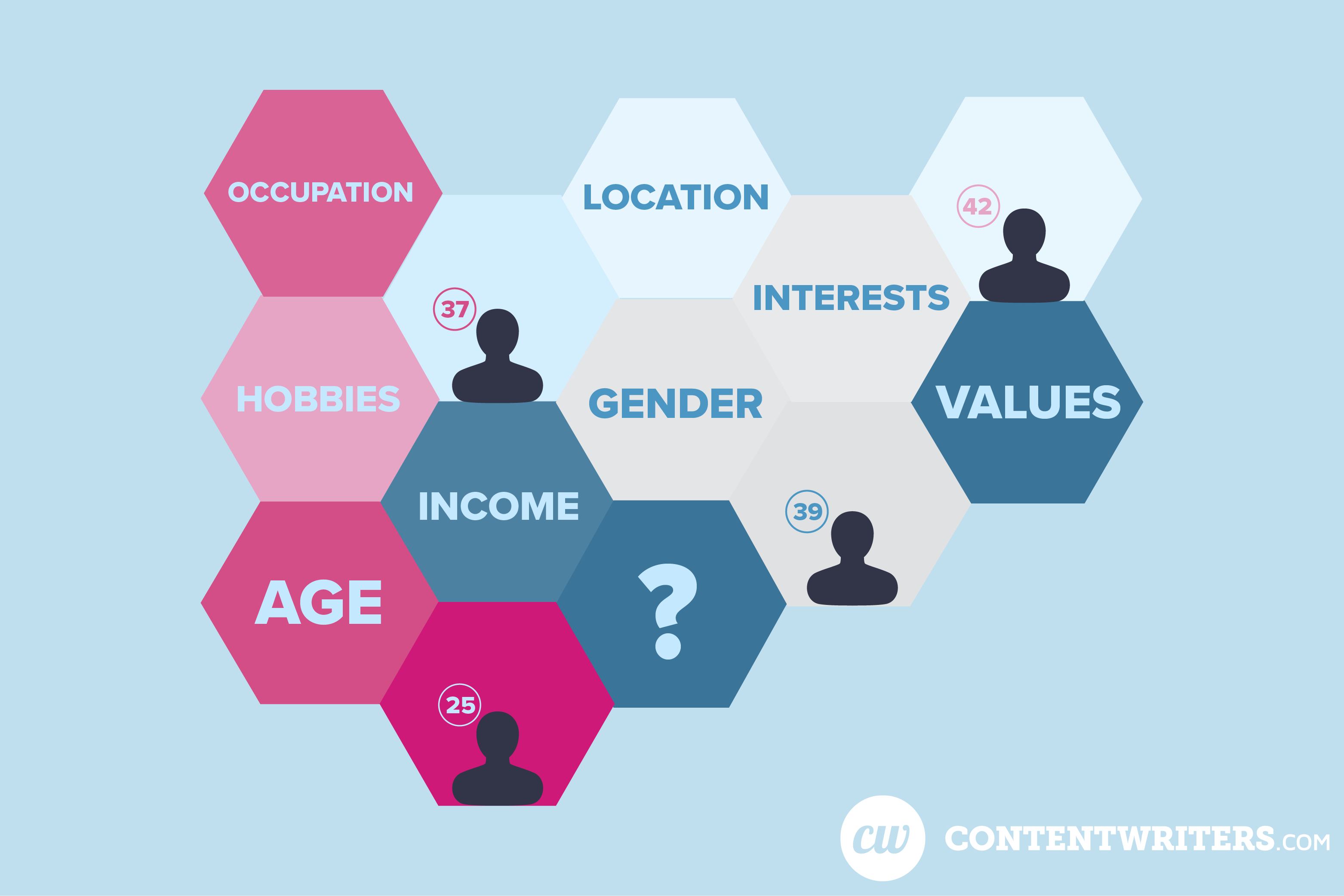
How to Create SEO-Friendly Headlines for Real People (Not Just Search Engines)
Goldfish are more attentive than humans. This is the big takeaway from estimates of where the average human attention span currently stands – which is a second less than the 9 seconds common in goldfish.
A ridiculously short attention span is just one of the reasons to put some extra time and effort into headline writing. It’s also important to do this because headlines today need to satisfy the demands of both search engines and actual searchers – at least if ranking well with your content is one of your goals.
A 2018 study found most people share articles after only reading the headlines. There may be a growing sense of apathy among online searchers based on these results, but a lot of people do still actually read content (thankfully).
When it comes to headlines, though, it’s best to keep both searchers and search engines happy. The reality is, no matter how awesome your content, people aren’t going to find it if it’s not also in line with basic SEO guidelines.
This is why it’s best to find a happy medium between important SEO factors and what appeals most to real people when writing headlines. Here are some tips to keep in mind as you move forward with your headline writing efforts.
Know Your Audience (or Be Really Sure You Do)

Before you dive into headline writing, explore your stats (Google Analytics is a good starting point) to make you know your audience. Even if you think you have a firm grasp of your audience, things can change over time.
Pay particular attention to:
- Whether most of your traffic is from mobile devices or desktop ones
- Key demographics
- Traffic patterns by geographic location (if your content is typically location-based)
- Existing content you already have posted that your audience is already responding to
These details come in handy for headline writing since you’ll want to tap into known interests, concerns, or priorities with your headlines. Besides, most people click on headlines because they believe they contain useful information.
Make Your Headlines Relevant and Unique
Let’s assume you’ve done your audience research and you know exactly who you are writing headlines for. Now, let’s take a look at what to keep in mind as you fine-tune your headline writing skills.
For starters, Google doesn’t just look at keywords when evaluating headlines for ranking purposes. They also pay attention to how relevant a headline is to its related content.
Uniqueness is another key factor to be mindful of as you craft your headlines. If you find your headlines are fairly similar, take another look at your content to see how you can have more of a variety.
Aim for overall uniqueness with your headline writing efforts in general. A quick way to check headline uniqueness is by entering your intended headline in Google with double quotes around it.
The results will show if there are any exact matches to your headline. Even if your message on a particular topic is entirely different, it’s still best to vary your headline from others. This will help to avoid confusing searchers.
Keep Character/Word Length in Mind
Remember the short attention span mentioned above? This is why you want to keep headlines short and sweet, which means being mindful of character and word length. According to Outbrain, the “sweet spot” with headlines is 60-100 characters or 16-18 words.
Avoid over-stressing about headline length, however, by simply writing a relevant headline first. After you do this, go back and fine-tune it by eliminating unnecessary or redundant words.
A/B Test to Identify Your Best Performing Headlines
Take some of the uncertainty out of headline writing with A/B testing. It’s a process of presenting two different headlines for the same content. Results are compared and the headline your target audience responds to the most is used.
A/B or split-testing has the potential to contribute to more clicks, traffic, and conversations since there are many ways to do this type of comparison testing. Options include:
- Using convenient A/B test plugins
- Briefly running 2 paid ads with the same content but different headlines to see which one gets more clicks
- Placing links to the same article with links from 2 different headlines on your preferred social platform
The best part about A/B testing for headline writing is that it works for all types of online-accessible headlines. For instance, you might run brief email campaigns to compare headlines before launching your various email campaigns. You can also A/B test headlines for blog posts, native ads, various pages on your website, and even text-based marketing content.
Kick Things Off with a Number (to Suggest a List)
People inherently love lists. And this is what numbers in headlines typically suggest.
In fact, there are some valid psychological reasons why list-suggesting headlines tend to go over so well.
People like instantly knowing what they’ll be reading about. List lovers also like to guess and be proven right if what comes to mind is actually on a list. A simple way to indicate a list with headline writing is to use a number to kick off your headline
Numbers in headlines can also be impactful even if the content wasn’t created with a list in mind. For instance, you may have started out writing about surprisingly healthy foods and you just naturally came up with five things. So, your final headline could be “5 Surprisingly Healthy Foods.”
As long as we’re on the topic of numbers, opt for odd figures rather than even ones. The Content Marketing Institute points to research suggesting the brain perceives odd numbers to be more appealing or credible than even numbers.
Tweaking headlines with odd numbers, also according to CMI, actually boosted click-through rates by 20 percent! So, the odd number theory is worthy of a test. Be sure not to spell out numbers in headlines. Digits are easier to read.
Make a Big Promise (but Deliver)
If you’ve ever checked out Buzzfeed articles, then you’re likely all too familiar with this headline writing tactic. It’s done by making a slightly (or sometimes wildly) exaggerated promise to instantly generate interest (“15 Mind-Blowing Breakfasts Guaranteed to Make You a Morning Person” – a real Buzzfeed headline, by the way).
A similar tactic is to use overly emotional headlines delivering a big promise (“You’ll Cry When You See the Super Cute Thing This Puppy Did!”).
Granted, this tactic is a bit tabloid, but Google doesn’t have any specific guidelines against it. Still, if you do use it, make sure you deliver with equally compelling content.
Emphasize Useful Things
If this “in your face” headline writing isn’t something you wish to embrace, go in the opposite direction and attract attention with headlines suggesting something clearly useful. These are the headlines that typically give readers some type of advice or how-to guidance.
Such headlines tend to be click-worthy because many online searchers have a natural desire to learn something. If you plan to present something a bit complex to a more general audience, however, keep simplicity in mind.
For instance, searchers may be hesitant to click an article with the headline “Here’s What You Need to Know about SEO.” Search engine optimization can, after all, be a fairly broad and complex topic, especially for searchers with only a casual interest.
Searchers curious about SEO or are not fully aware of what’s involved with it might, for example, gravitate towards a headline presented as: “Top 5 Basic Things You Absolutely Need to Know about SEO.”
The headline tells the reader exactly what they’ll be getting before they invest any time in actually reading it. It also suggests simplicity by referencing only five aspects of SEO.
Another way to present something useful or practical with headline writing is with relevant facts or tips. This is usually done with phrases like “X Tips for…” or “5 Fast Facts about…” This approach to headline writing can be an effective way to up your credibility by sharing knowledge with your audience while also tapping into natural searcher curiosity.
Facts/tips in headlines can also be adapted to pretty much any type of content. A doctor’s office, for example, might offer “X Tips for Staying Healthy in the Summer Heat,” while a law firm might offer “5 Facts about Summer Car Accidents You Need to Know.”
Fact/tip-based headlines also work well for blogs and social media posts because of the ability to quickly grab attention.
Go Super Positive or Super Negative
If you haven’t noticed yet, there’s a trend developing here. Effective headline writing taps into natural human curiosities. Tactics may vary, but the desired results are often similar.
Yet another way to generate interest with your headlines is to go to one extreme or the other with your descriptive adjectives. So, you would use words like “best,” “greatest,” “hottest,” or “biggest” to suggest something positive. On the flip side, terms like “worst,” “never,” or “avoid” suggest negative things.
Superlatives like these can be coupled with relevant keywords to give your attention-getting headlines some added SEO power. You can also combine other headline writing tactics with this one – e.g., “Avoid These 7 SEO Mistakes.”
In this case, a number is being used to suggest a list and a negative superlative is used to further generate interest (“I certainly don’t’ want to make mistakes if I’m going to invest my time and money into SEO, so I better read this!”)
You also see a lot of “greatest” or “best” superlatives thrown into headlines. This is fine as long as the content makes a solid case to justify the headline. For instance, an article titled “The 50 Greatest Albums of All Time” should probably be backed up with input from music critics and other authorities on this topic.

Create a Sense of Urgency with Your Headlines
“7 SEO Techniques You Can Implement Now” and similar headlines suggest a sense of urgency for searchers. You can also be more subtle about it by implying a sense of urgency through a lack of knowledge – e.g., “10 Blog Writing Mistakes You May Be Making without Knowing It.”
As with other headline writing techniques, you want to deliver when stressing a sense of urgency. Keep your points clear, concise, and aligned with what’s suggested by your headline. Plus, when done right, headlines of this nature tend to be highly shareable. We all have a desire to share recently acquired knowledge.
Mix Things Up to Keep Your Audience Interested
One of the pitfalls of regular headline writing is developing common preferences or habits. You might, for example, ten to naturally do the list thing.
It’s understandable to have certain types of headlines that work well for you and your intended audience. However, that same audience can get bored if you keep producing similar types of headlines (“Oh, great, another list!”) even if the accompanying content is different.
Keep your target audience engaged by experimenting with different headline tactics. But remember, mixing things up doesn’t mean getting overly complicated. You still want to use common, easy to comprehend terms in your headlines to account for the skimming habits of most online searchers.
Final Thoughts
Being more adept at headline writing isn’t going to do you any favors without awesome content to work with. If you create the content yourself, be sure to go back and read what you wrote. Remember to view it as a first-time reader.
Once everything looks great content-wise, also make sure the headline still fits. It’s common to start the writing process with one headline in mind only to end up going in an entirely different direction.
This is fine when the result is a really awesome and unique article. But it can create a disconnect with your intended audience if you don’t fine-tune the headline. Be just as diligent with headline writing for content you repurpose, update, or acquire from other sources.
While creating headlines, aim to be fairly consistent with the tone and messaging as well. The good news is this should happen naturally over time once you get a steady rhythm going with your content and related headlines. Happy headline writing!
Ken is a freelance writer currently living in the Pittsburgh area of Pennsylvania. Born in California, his fondness for writing dates back to elementary school writing contests and led to positions on both high school and college newspapers. He earned a degree in Journalism and Communications from Point Park University and did work in data entry after college before transitioning to a full-time career as a freelance writer. While his areas of expertise are marketing and health-related content, Ken is a versatile writer and enjoys exploring and researching a variety of topics. When not busy knocking out articles, he likes to spend time with friends, go for walks, and discover new and exciting things about the world around him.






